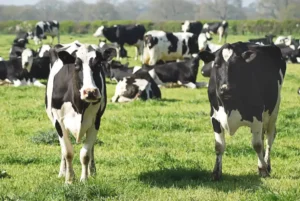
Chromatographic immunoassay is a widely used method for detecting specific antigens or antibodies in biological samples. It is fast, cost-effective, and easy to use, making it essential in diagnostic testing.
What Is Chromatographic Immunoassay?
Chromatographic immunoassay is a technique that combines immunological reactions with chromatographic separation to detect target molecules in a sample.
This method relies on antigen-antibody interactions, using labeled detection molecules to provide a visible result.
How Does Chromatographic Immunoassay Work?
The process involves applying a sample to a test strip, where it migrates through capillary action, interacts with antibodies, and produces a detectable signal.
Key Steps in Chromatographic Immunoassay
- Sample Application: The sample is placed on the test strip.
- Migration: The sample moves through the strip via capillary action.
- Antibody Binding: The target molecule binds to antibodies labeled with detection markers.
- Signal Development: A visible line or color change appears to indicate a positive result.
Types of Chromatographic Immunoassays
Different formats of chromatographic immunoassays exist, each suited for specific applications.
1. Lateral Flow Immunoassay (LFIA)
Commonly used in rapid diagnostic tests, such as COVID-19 and pregnancy tests.
2. Flow-Through Immunoassay
Used in high-sensitivity applications, allowing fast liquid flow and quick results.
3. Competitive Immunoassay
Often used for small molecule detection where signal intensity is inversely proportional to target concentration.
Applications of Chromatographic Immunoassay
This technique is widely used in various fields.
Medical Diagnostics
Used for infectious disease testing, drug screening, and hormone detection.
Veterinary Testing
Detects animal diseases, ensuring health monitoring in livestock and pets.
Food Safety
Identifies contaminants such as allergens, toxins, and antibiotic residues.
Environmental Monitoring
Used to detect pollutants and hazardous substances in water and soil.
Advantages and Limitations
Advantages
- Rapid and easy-to-use
- Minimal equipment required
- Cost-effective
Limitations
- Limited sensitivity compared to lab-based assays
- Potential for cross-reactivity
- Qualitative or semi-quantitative results
Conclusion
Chromatographic immunoassay is a crucial tool for rapid and accessible diagnostic testing.




